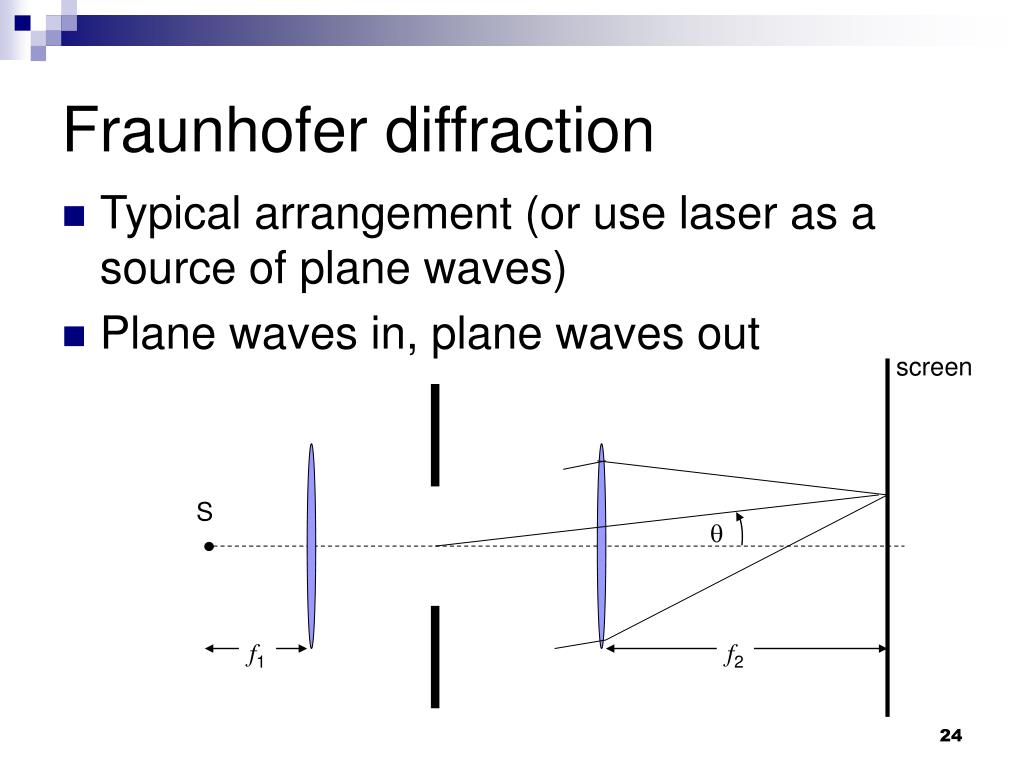

In the following plots, we'll just look at the phase, and we'll ignore the fact that the intensity also drops off in proportion to the distance in 2D. The phase of the impulse response is simply proportional to the distance from the slit (which we'll always assume to be at the origin). The spherical solution to the scalar wave equation is the impulse response (green's function) and the aperture is the driving function. By considering all the points in the aperture as sources of spherical waves, you're doing the same thing electrical engineers do when they solve for the impulse response of a system and convolve it with a driving signal. The transition to scalar diffraction is made by asserting that if the aperture from which we're diffracting is large, the effects of the boundary conditions at the edge of the aperture will be small and won't differ with the polarization of the field." This, then, is the basis behind Huygen's principle. However, the amplitude is fairly uniform we typically don’t deal with polarization in Fourier optics. This spherical wave is not uniform in amplitude, and in addition has a polarization (vector) aligned with the dipole. The other commonly derived solution to the wave equation is a spherical wave emanating from a point dipole. But when talking about computational diffraction these are not useful solutions, because it's difficult to match finite boundary conditions using waves with infinite extent. The first is the usual plane wave that we're all familiar with.
#FRESNEL FRAUNHOFER DIFFRACTION FULL#
Starting from the full vector Maxwell equations, it is common to derive two fundamental wave solutions. This is needlessly vague and without rigor. the impulse response in 3D) is a spherical wave. In scalar diffraction theory, the starting point is usually Huygen's principle, which states that the field emanating from an infinitely small point (i.e. (These functions are for learning, not actual work!) All functions are normalized an assume a wavelength of unity. These functions will plot the phase fronts of a wave on a normalized set of axes or numberically compute diffraction given a kernel function and aperture function (in 2D). This will probably only be of much interest to people already briefly familiar with diffraction theory, though the pictures should serve as a nice illustration of what's going on with the approximations for somebody just learning diffraction theory. I also demonstrate the Fraunhofer diffraction approximation is actually completely conceptually separate from Fresnel diffraction and that it makes little sense to use the Fresnel kernel as is typically shown in books. I show that Fraunhofer diffraction can be computed using the Fourier transform simply by arguing their equivalence from an impulse response standpoint. In this Mathematica notebook, I illustrate the various approximations used in diffraction theory by focusing on the phase of the impulse responses (Green's functions) implicit in each. The analytical expressions for the vortex radii are also discussed.MIT Ultrafast Optics and Quantum Electronics Group The wave amplitude and the intensity distributions are discussed for the near and far fields in the focal plane of a convergent lens, as well as the specialization of the results when the grating charge p=0 i.e., the grating turns from forked into rectilinear. The radial part of their wave amplitudes is described by the product of the mpth-order Gauss-doughnut function and a Kummer function, or by the first-order Gauss-doughnut function and the difference of two modified Bessel functions whose orders do not match the singularity charge value. Optical vortex beams, or carriers of phase singularity with charges mp and -mp, are the higher negative and positive diffraction-order beams. The common general transmission function of the gratings is defined and specialized for the cases of amplitude holograms, binary amplitude gratings, and their phase versions. Expressions describing the vortex beams that are generated by the process of Fresnel diffraction of a Gaussian beam incident out of waist on fork-shaped gratings of arbitrary integer charge p, and vortex spots in the case of Fraunhofer diffraction by these gratings, are deduced.


 0 kommentar(er)
0 kommentar(er)
